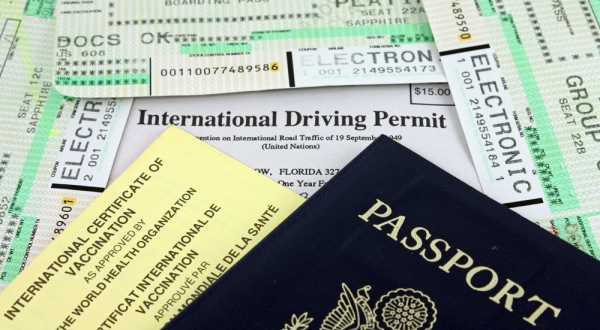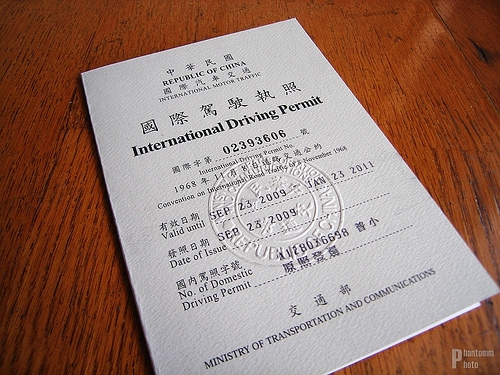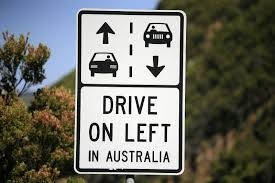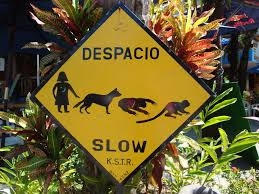Don't miss out on the best jobs!
Subscribe to HelpGoAbroad and weekly we will sent you an email with latest job posts. Provide your email address below
Chances are that when you travel abroad, you’ll want to explore as much as possible and using a vehicle is an effective way to satiate your adventurous desire to see all that you can! However, driving in other countries can be quite unusual with their traffic laws and methods to what you were accustomed to back home. If you plan on driving in a foreign country, don’t leave home without official international licensing documentation and research about driving rules in your country would be helpful as well.
International Licensing
The origin of the country that issued your license determines the hoops you will have to jump through to acquire documentation that will allow you to legally and safely drive abroad.
For example, North America issues International Driver’s Permits (IDP) and Inter-American Driver’s Permits (IADP), which can be acquired through the American Automobile Association (AAA)or National Automobile Club (NAC). You must be 18 years of age, with a valid driver’s license, two passport sized photos with the backs autographed and they charge a fee of $15. It bears a translation of your American Driver’s license information into 11 different languages including English, French, Italian, Swedish, German, Chinese, Arabic, Spanish, Japanese, Russian and Portuguese. You must always carry your US license with the IDP for it to be valid when driving abroad. You can only attain an IDP from the country which your license was issued, so if you realize you need one while you are already abroad, you won’t be able to remedy the situation until you get home.
France requires you to go to the administrative council of the city armed with proof of address in the current city, original French driver’s license, and passport. Processing takes about a week and the document you receive is called Permis de Conduire and it is valid for three years. Just like the North American IDP, it has various languages inside the small booklet.
These are just two examples of different country’s international driving qualifications for the IDP, and each country has it’s own set of requirements.
Research your own country’s specific rules, deadlines and required documents to make sure that you will have a legal certificate to drive. Also, do not assume that you are covered by your insurance when driving internationally. You could be in serious trouble physically and financially if you miscalculate the coverage of our insurance plan, revisit your insurance paperwork to see what is actually included so that you can add international insurance if necessary.
Scams
Beware of scams that can cost you anywhere from $60 to $400 for a worthless fake document that claims to be an IDP. Promises that people will be able to drive in the US despite their lack of an official state-issued licence or that they will be able to use it as photo identification are false statements that can lead to serious ramifications if you get into complications where documentation is necessary.
Rental Agencies
Foreign rental agencies have their own conditions when it comes to rentals for travellers. Even if a country’s government recognizes the IDP, car rental companies may still require you to present your IDP and license before approval to rent. When it comes to motorbike rentals, more leeway can be found in certain countries such as Thailand where licenses are not at all required for rental. Other countries such as Australia will charge $2,000 AUD deposit on the bike that will be returned to you once you return the bike and they expect the presentation of official international driver documents.
International Rules
Terrain
Roads are usually interpreted as stable pathways designed for vehicles to travel easily, generally asphalt in more urban settings, while more rural roads may be made of dirt, trails and even sand. Be wary when driving on alternative terrain, as it may require a certain level of skilful know how and you may be inclined to hire a driver specialized in these kinds of roads. Unmarked rural roads may also be tricky to navigate, even with a map, so hiring an experienced driver may be your best bet.
Which Side of The Road?
You may have gotten comfortable driving on a particular side of the road, but your destination abroad may have a different directional organization. In fact, the cars are usually reversed as well, with the driver’s side on the opposite side and controls seemingly backwards. It just takes a bit of time to adjust, but most people catch on quickly with the driving controls, issues arise more from right of way confusion than anything else.
Right of Way
While you may be used to driving in countries where traffic lights govern the right of way, specific lanes for bicyclists, and lines on the road to indicate where you are supposed to drive, other countries have different ways of designating the right of way in traffic. In several under developed countries, there are no traffic lights and drivers communicate with their horn, lights and aggression. You may also find that besides the fact that traffic lanes are merely guidelines for organization, you’ll have livestock wandering perpendicular to oncoming car traffic. Motorbikes will go wherever they can fit, regardless if it is in your way, so keep an eye out for them flitting in and out of traffic.
Traffic Signs
Traffic markings on roads tend to have “loose” jurisdiction in other countries such as the Philippines where your place on the road is determined by where you can fit in the vehicular congestion, Brazil where “no passing” lane markings are simply a suggestion that is rarely obeyed and Indonesian speed limit signs are a base measurement.
Police Enforcement
One of the largest reasons for the lack of respect for traffic signs and lanes is the absence of police reinforcement. That is not to say that there aren’t police, but abroad you may find that problems are handled differently. Some cops can be easily bribed with a small monetary note while others simply understand that massively speeding is just the way that things function. There are numerous under developed countries where police forces are suspected for corruption and honorless conduct. In these countries, the roads have simply adapted to functioning without an intense police presence and know how to handle situations on their own terms.
Different Vehicles
Just as different cultures have different ways of dressing, different countries have different types of vehicles that are most popularly used or plainly available. In most of Europe, the vast majority of cars are manual rather than automatic and they are much smaller than North American cars. Manufacturers understand the needs of their international customers, specifying car designs to each country, such as making more tropical enhancements for a car heading to South America. They might even change their name and logo for better marketing purposes, but it might be the same car as another country. Even motorbikes vary, while some areas like North Eastern Brazil has motorbikes that are predominantly manual, while Bali has a hefty majority of automatic motorbikes to appeal to tourist needs for easy handling.
Sign in to publish a comment





Be the first to comment on this post.